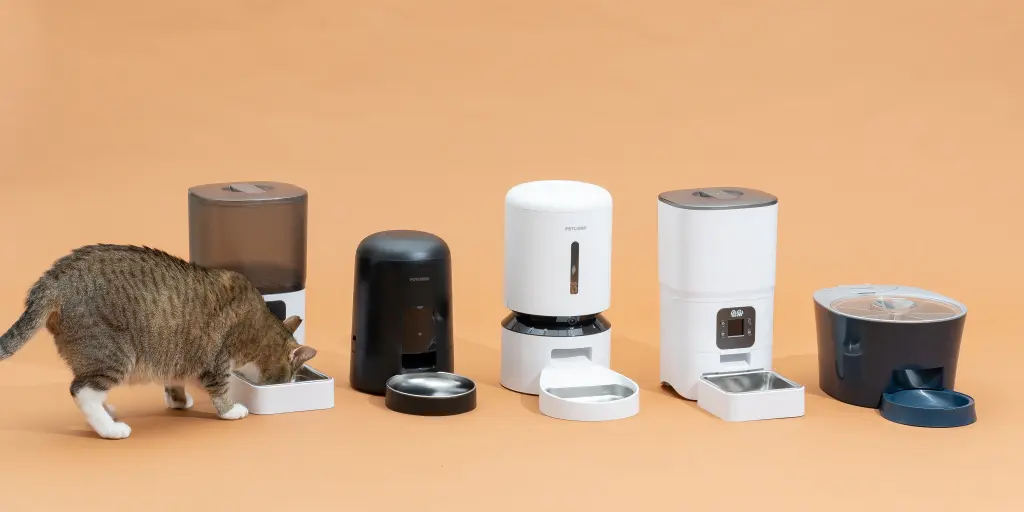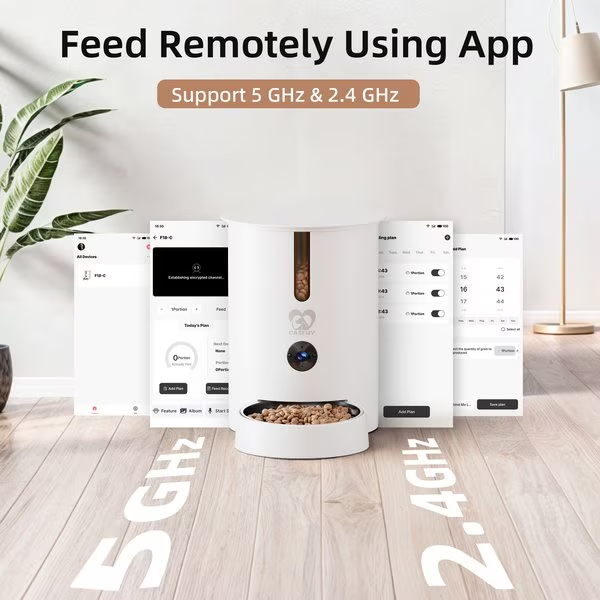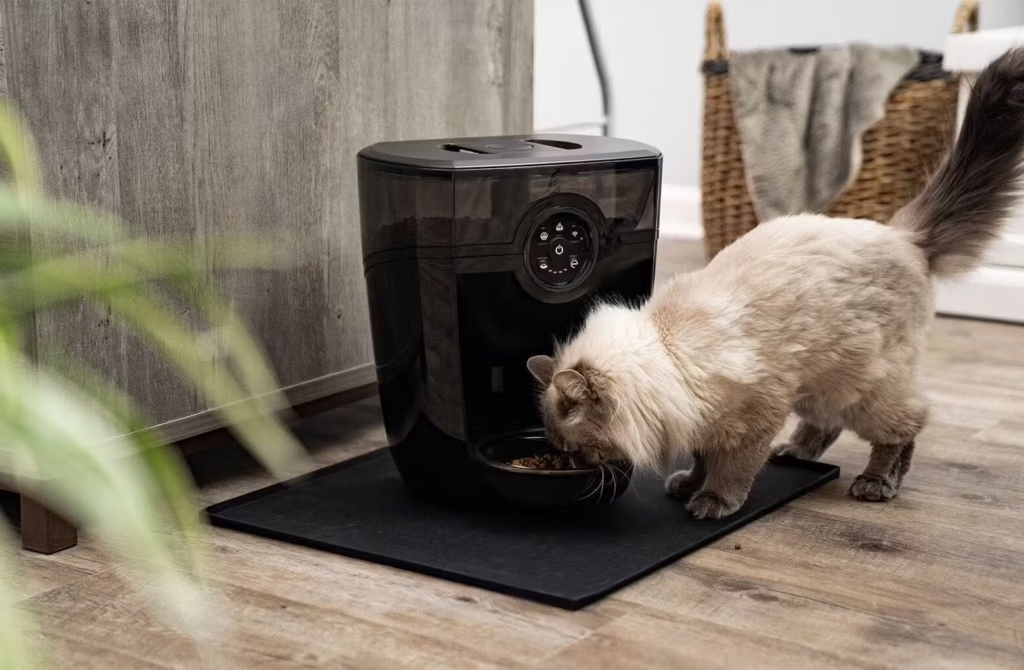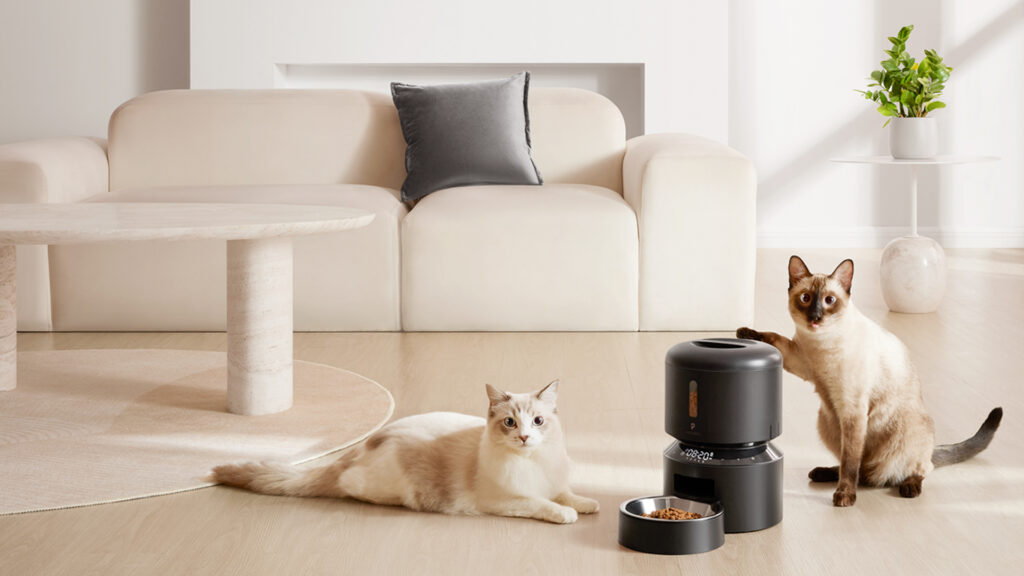Cat Feeding Schedule by Age: Complete Cat Diet Plan & Feeding Chart
Feeding your cat may seem as simple as filling up a food bowl, but in reality, your feline's health depends heavily on structure, balance, and consistency. A well-planned cat feeding schedule not only prevents obesity but also helps with digestion, reduces stress-related behaviors, and ensures your pet gets the right nutrients at every life stage.
Whether you're raising a playful kitten, maintaining an active adult cat, or caring for a senior cat, an age-appropriate feeding routine is one of the best ways to support long-term wellness.
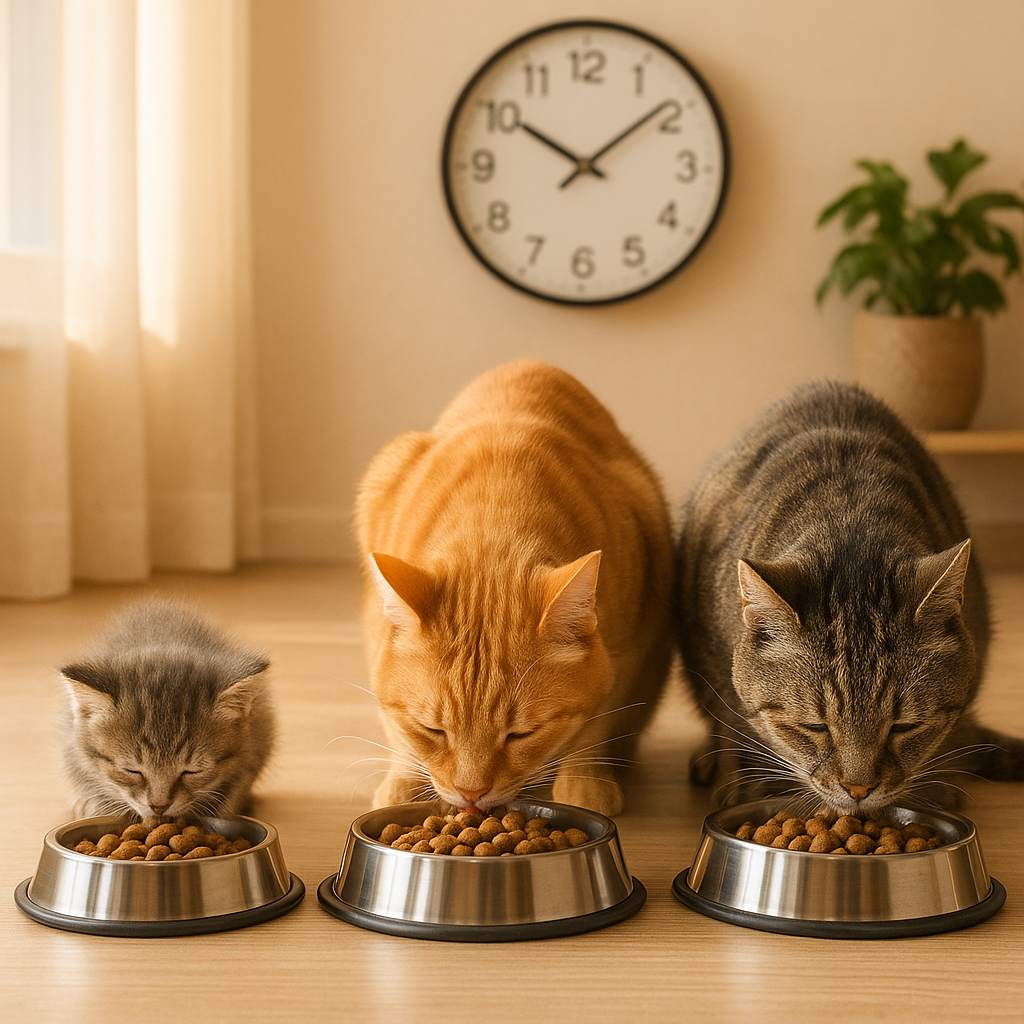
Why a Cat Feeding Schedule Matters
A cat's diet isn't just about what they eat—it's also about when and how much. Unlike dogs, cats are natural grazers. In the wild, they eat multiple small prey meals a day. However, when fed commercial cat food, this instinct can backfire, leading to overeating.
Benefits of a Structured Cat Feeding Schedule
Prevents obesity, which is common in indoor cats.
Smaller, timed meals reduce vomiting and indigestion.
Routine feeding cuts down begging and nighttime crying.
Scheduled mealtimes create rituals that strengthen your connection.
Risks of Irregular Feeding
- Overeating and obesity
- Malnutrition from inconsistent food choices
- Stress behaviors like aggression, crying, or food guarding
- Higher risk of diabetes and urinary tract infections
In short, a structured cat feeding schedule by age sets your cat up for a healthier, happier life.
Cat Feeding Schedule by Age
Since cats' nutritional needs change as they grow, the ideal cat diet plan depends on life stage.
6–12 months: 3 meals per day
Balanced mix of wet and dry food
Senior formulas with joint support
Kitten Feeding Schedule (0–12 Months)
Kittens have tiny stomachs but fast metabolisms, so they need frequent meals rich in calories, protein, and fat.
Adult Cat Feeding Schedule (1–7 Years)
Adult cats require portion control to prevent obesity, especially if they are indoor-only. Adjust portion sizes based on indoor vs. outdoor lifestyle.
Senior Cat Feeding Schedule (7+ Years)
Older cats may need smaller but more nutrient-rich meals. Consider easier-to-chew wet food for cats with dental issues.
Feeding Chart: Daily Meal Breakdown
Here's a sample cat feeding chart by age:
| Cat Age/Type | Meals Per Day | Food Type | Portion Size (per meal) |
|---|---|---|---|
| 0–6 month kitten | 4 | Wet + Dry | ¼ can wet + small dry |
| 6–12 month kitten | 3 | Wet + Dry | ½ can wet + dry portion |
| Adult indoor cat | 2–3 | Wet + Dry | ½ can wet + ¼ cup dry |
| Adult outdoor cat | 2–3 | Wet + Dry | ¾ can wet + ½ cup dry |
| Senior cat | 2–3 | Mostly Wet | ¼–½ can wet + small dry |
Customize based on weight, activity, and health.
Cat Diet Plan Essentials
A good cat diet includes protein, healthy fats, vitamins, and minerals.
Protein – The Core Nutrient
Cats are obligate carnivores. Kittens need 30–40% protein, while adults need 25–30% protein. Protein builds muscles, supports organs, and fuels energy.
Fats and Carbohydrates
Fats provide energy and coat health. Carbs aren't essential but offer fiber for digestion.
Essential Vitamins & Minerals
Essential for heart and eye health.
Critical for strong bones and teeth.
Support skin, coat, and brain function.
Always choose AAFCO-approved cat food to meet these nutritional needs.
Cat Diet Chart: Portion Sizes and Calories
Cats generally need 20–25 calories per pound of body weight per day.
| Cat Weight | Daily Calories | Portion Size Example |
|---|---|---|
| 5 lbs | 180–200 | ¼ cup dry + ¼ can wet |
| 10 lbs | 250–280 | ½ cup dry + ½ can wet |
| 15 lbs | 300–350 | ¾ cup dry + ½–¾ can wet |
Adjust gradually if your cat gains or loses weight unexpectedly.
Wet Food vs. Dry Food in a Cat's Diet
Both wet and dry food have their advantages and disadvantages. Here's a comparison:
- High moisture (hydration + urinary health)
- Palatable (cats love the texture)
- Easier to chew (great for kittens/seniors)
- More expensive
- Spoils quickly if left out
- Convenient, affordable, easy to store
- Helps reduce tartar
- Low moisture = dehydration risk
- Encourages overeating if free-fed
Balanced Strategy: Morning wet food + daytime dry snack + evening wet food.
How Much Should I Feed My Cat?
Feeding amounts depend on several factors including weight, activity level, and age.
Weight-Based Guidelines
- 8 lbs cat → 160–200 calories/day
- 10 lbs cat → 200–250 calories/day
Indoor vs. Outdoor Cats
Need fewer calories → portion control is essential
Require more calories to fuel activity
Free-Feeding vs. Scheduled Feeding
Convenient but risks obesity. Only recommended for very active outdoor cats.
Best for weight control and bonding. Recommended for most cats, especially indoor ones.
Verdict: Stick to a structured feeding schedule by age.
Special Feeding Needs
Not all cats have the same nutritional requirements. Some need special consideration:
Weight-control formulas, smaller portions, more playtime
High-calorie kitten food, frequent small meals
Kidney disease → Low protein, high moisture
Diabetes → High-protein, low-carb
Allergies → Limited-ingredient diet
Feeding Tips for Busy Owners
Maintaining a consistent schedule can be challenging when you're busy. Here are some solutions:
Use automatic feeders for dry food to maintain consistency.
Pre-portion wet meals in containers for quick serving.
Try to feed your cat at the same times every day.
Common Cat Feeding Mistakes
Even well-intentioned cat owners can make these common feeding mistakes:
Can lead to dehydration. Always include wet food in their diet.
Many human foods are toxic to cats. Avoid sharing your meals.
Treats should make up no more than 10% of daily calories.
Can cause liver issues in cats. Maintain a consistent feeding schedule.
Transitioning Between Diet Stages
When switching foods or transitioning between life stages, do it gradually:
Cat Feeding Schedule for Multi-Cat Homes
Feeding multiple cats requires special consideration:
Provide individual bowls for each cat to monitor food intake.
Feed cats in different rooms to prevent competition and fighting.
Adjust portions based on each cat's age, weight, and health needs.
Conclusion
A cat feeding schedule by age is the key to a healthier, longer life. By following the feeding chart, portion sizes, and age-specific diet plans, you can prevent obesity, improve digestion, and strengthen your bond with your cat.
Remember: Consistency + portion control = healthy cats.

